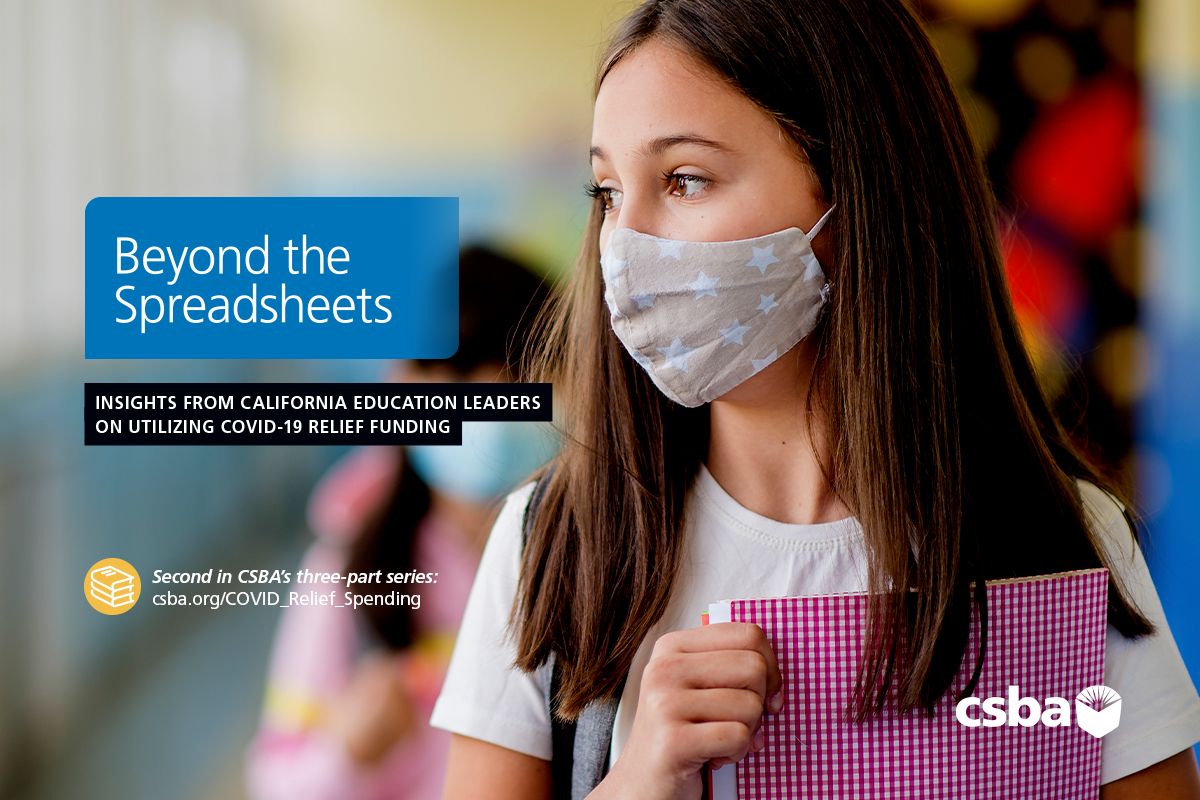By Jeremy Anderson
Since the beginning of the pandemic, there has been a national conversation about its impacts on student learning. Compounding this concern is the educational inequities that pre-existed the pandemic were worsened in school districts that primarily serve historically marginalized students.
This conversation was recently amplified in mid-September when the National Center for Education Statistics (NCES) released the first “post-COVID” era National Assessment of Education Progress results. The results were, as NCES Commissioner Peggy G. Carr put it, “sobering.” CSBA published a blog post covering the results in more detail, but most worrying in the scores was the growth in achievement gaps among historically marginalized students. It is important to note that these scores were for one cohort (9-year-olds) and do not connect the results to any COVID-era policy decisions. While the lasting power of these declines is unknown, the inequities embedded in the results are very troubling.
Interwoven in the broader discussion are the historic sums of state and federal COVID relief funding, much of which are directly aimed at helping local educational agencies address disrupted learning. Since learning recovery (particularly to address widening inequities) is a vital and immediate educational need, a central question is how LEAs are using emergency relief aid to address the issue.
The answer is nuanced for a couple of reasons. First, federal data on LEA spending only gives a limited picture of learning recovery program expenditures. CSBA analyzed that data in its first report on COVID relief funding in California. The data in the federal reports give a broad understanding of the general categories LEAs prioritize in their spending. However, it is too vague to see the types of programs implemented at the local level. In reality, learning recovery programs are not as cut and dry as the reporting categories in the data and can span multiple funding streams. The second reason is that learning recovery looks different between districts, schools and even students — especially because challenges presented by the pandemic impacted students and communities in unique ways. Local responses are also shaped by pre-existing services and infrastructure of academic supports.
CSBA survey on COVID relief funding
To help gain a better understanding of how school districts and county offices of education have used COVID funding for learning recovery, CSBA launched a survey that captured responses from 239 superintendents and chief business officers from across the state. The findings from that survey are published in the report, Beyond the Spreadsheets: Insights from California education leaders utilizing COVID-19 relief funding.
Learning recovery was one of the top priorities ranked by respondents. School leaders saw these programs as essential in the short term and vital in continuing once relief funding ends in the next few years. Given the diversity in the survey sample, learning recovery programs looked different across and within districts. In their responses, school leaders spoke about using COVID relief funding on a wide range of expanded learning opportunities that included summer learning programs, before and after school, expanded tutoring and academic interventionists, and decreasing student-to-staff ratios. Seventy-seven percent of respondents rated summer learning programs as a high or essential priority in their relief spending. Additionally, nearly 60 percent of school leaders marked tutoring and before- and/or after-school programs as a high or essential priority. When asked what programs LEAs most hoped to continue once funding ended, nearly three-quarters of school leaders pointed to expanded learning programs.
While learning recovery was a central focus of survey respondents, it was also clear that challenges impacted their ability to implement short- and long-term programs. Chief among these concerns were staffing issues and concerns around sustainability. Many students who experienced some of the worst conditions of the pandemic need support in multiple academic and social-emotional domains from staff with specialties, such as academic interventionists, psychologists or mental health counselors. Sixty percent of those who participated in the survey said they had moderate or severe shortages in finding counselors, social workers, or psychologists. Ninety percent reported moderate or severe shortages with paraprofessionals, an important support for many students with disabilities, a group particularly impacted by the challenges of providing educational access during the pandemic.
There is not only one solution to learning recovery because the types of programs and supports it requires vary depending on student needs. Providing professional support for students struggling with mental health so they can fully participate in their education is an important aspect of learning recovery. Expanding educational technology to students with limited broadband access so they can attend after-school tutoring is learning recovery. Hiring more bus drivers so students from families who work earlier or later can participate in before- and after-school programs is also learning recovery.
It is clear from CSBA’s research that school districts are working across many domains to address the educational needs of their students. Local governance teams can help their communities understand this by consistently communicating about these programs and their impacts. They can also connect relief dollars directly to these support programs to help the public understand their efforts in planning and the strategies used in the implementation of learning recovery.
Jeremy Anderson is a CSBA education policy analyst.





